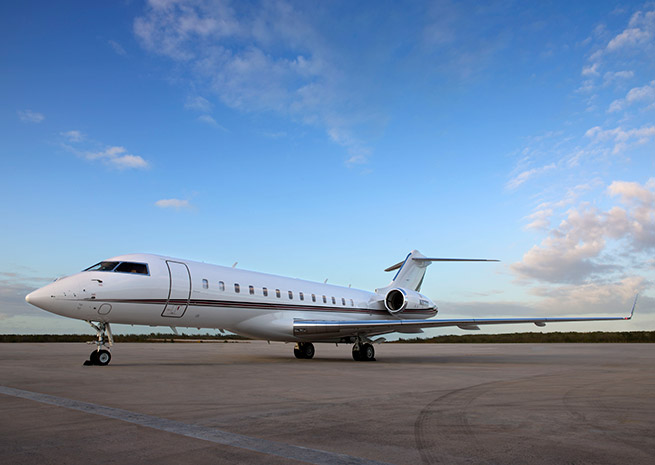
For NetJets customers flying in the new, long-legged Signature Series jets, the doctor is always in.
The Berkshire Hathaway company and charter industry mainstay announced on Nov. 29 that its long-range fleet—Bombardier Global and Challenger models now entering service—will be equipped with a British-made medical monitoring device called Tempus IC. Designed to monitor a broad range of vital signs and allow a live video conference with a physician, Tempus IC has proved a valuable addition to many airline and corporate fleets, according to Kevin Kelly, business development manager, Americas, for Remote Diagnostic Technologies, the device manufacturer based near London.
Tempus IC is designed for use by people with little or no medical training. It can monitor blood pressure, blood sugar, blood oxygen levels, respirations, and the electrical function of the heart through a sophisticated 12-lead electrocardiogram (long used in hospital and other medical settings), and beam that data to a remote physician for diagnosis. It has likely saved lives, though medical privacy laws preclude making that a definitive statement. For the many airlines and corporate operators who have purchased the roughly 1,200 devices now in service, it has also helped prevent unnecessary diversions that might have otherwise been required by the suspicion of a serious medical problem that a remote doctor was able to rule out.
“The doctors are now virtually on board,” Kelly said in a telephone interview. “It allows you to control the emergency instead of the emergency controlling you.”
Designed for use by people with little or no medical training, Tempus IC establishes a satellite or cellular network connection with MedAire, a company that maintains a staff of doctors for remote consultation and also supplies various kits of medicine and medical supplies that can be used under a doctor’s direction when needed.
“NetJets prides itself on having the highest safety standards in private aviation,” said NetJets Global Chief Operating Officer Bill Noe in a news release. “We have further enhanced that commitment with the Tempus device to provide a virtual 24/7/365 doctor for our passengers and crewmembers, particularly when they may not be within close range of a suitable medical emergency landing site.”
Kelly said he was told at the NBAA convention that medical consultations facilitated by Tempus IC helped flight crews avoid 10 unnecessary diversions in a single recent week. Given that emergency landings for medical help can cost an airline $150,000 or more, the appeal of the $65,000 device becomes evident. For corporate customers, Kelly said, there’s another benefit: avoiding the prospect of having a chief executive make news for an unplanned landing to deal with a medical emergency.
In case it’s an actual emergency, the benefits of early intervention that includes advanced medical care are well-established.
“This kind of control over a medical emergency is paramount when you may only have minutes to act,” said RDT CEO Graham Murphy in a news release. “This exciting technology allows doctors to see exactly what is happening with the patient on the aircraft and help the crew deal with a possible emergency swiftly and based on medical fact.”
Tempus IC is compact and portable, and can be taken off the aircraft for use on the ground, communicating through cellular or satellite networks—an advantage when visiting countries or regions where advanced medical care may not be readily available. It is also marketed for use on yachts, and in other situations where the prospect of prompt rescue may be remote.
"It’s a really cool piece of technology,” Kelly said, adding that Tempus IC is “certainly changing the way we handle in-flight emergencies now.”
NetJets recently launched the Signature Series, purchasing brand-new Bombardier Global and Challenger models that are now entering service with a range of custom amenities.




